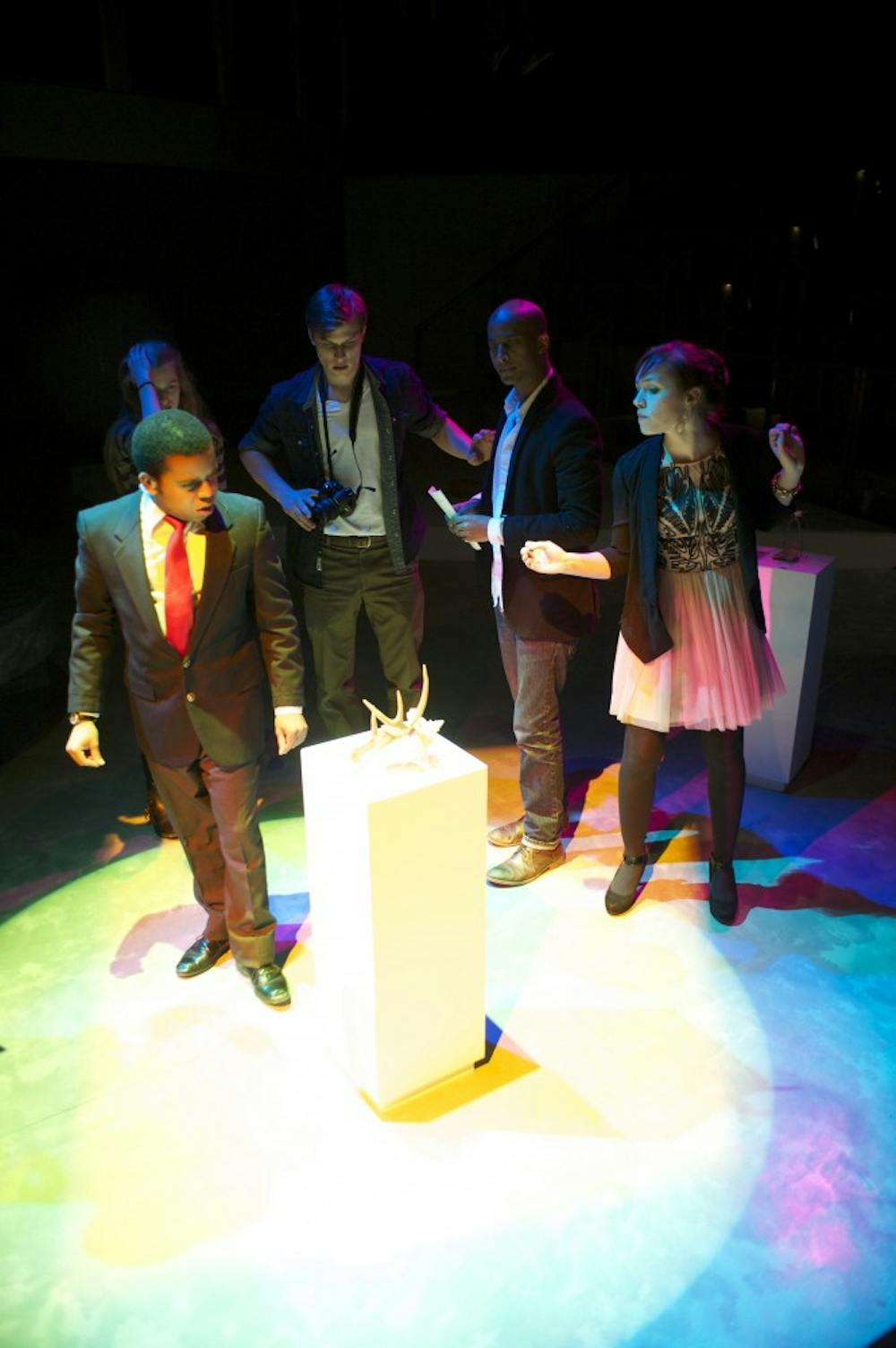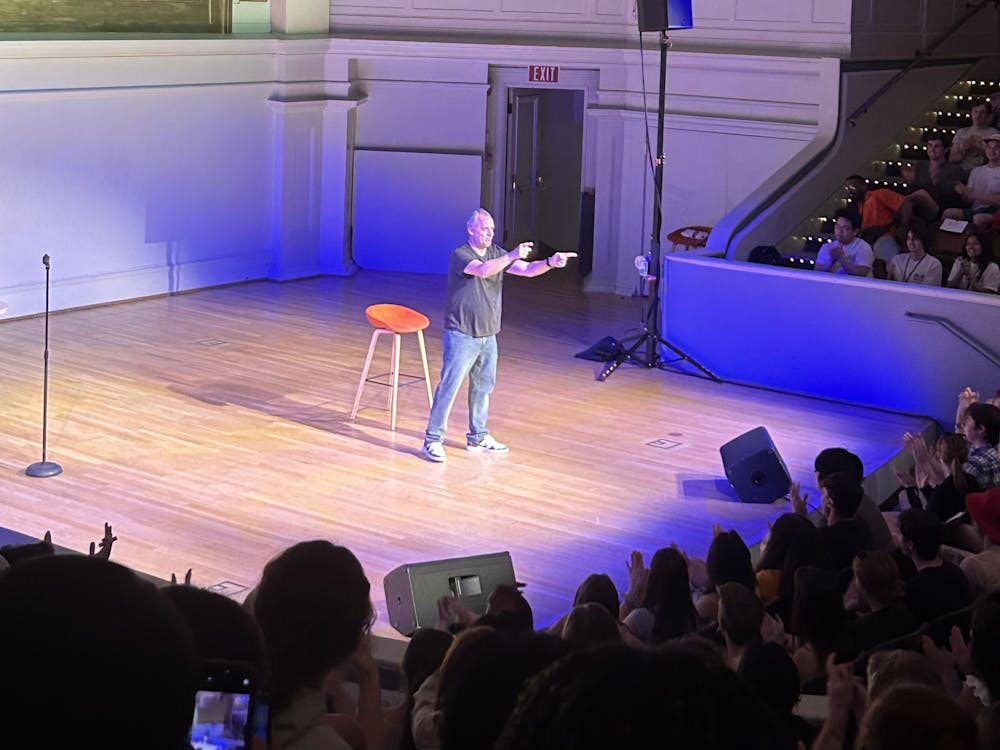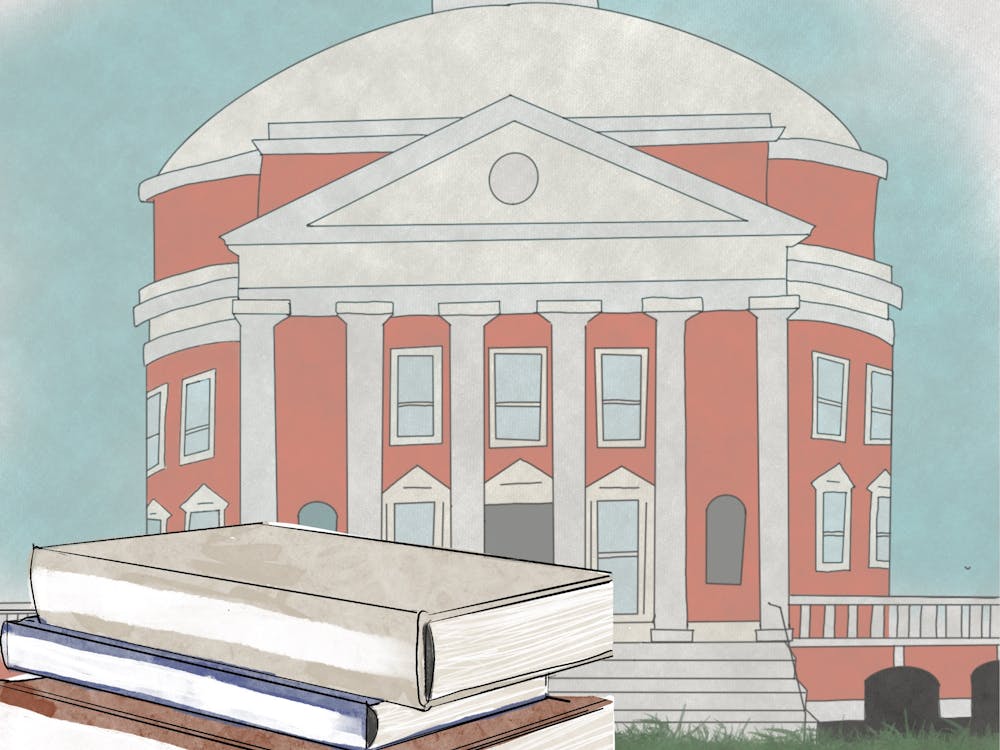Art contains more value than what meets the eye. A painting, drawing or sculpture may seem like a mere combination of lines, colors and objects, but found beneath the surface is a story far more imaginative, more spectacular and more insightful than the art itself.
This idea lies at the heart of Tina Howe’s “Museum.” Adapted and performed by the Drama Department, Howe’s play is an absurdist take on an art exhibition’s final day, where nearly 40 characters examine the works of three different artists.
Unlike this season’s previous productions, “Crazy for You” and “An Enemy of the People,” “Museum” features no consistent plot, no big conflict and no clear resolution to define the show. Rather, the characters themselves are the means for progressing the play. Scattered throughout the Caplin Theatre, they move in and out of scenes quickly, keeping the show fast-paced and entertaining. Furthermore, their eccentric and humorous personalities bring a wide array of meanings to the artworks.
“It’s a very lighthearted play,” said Assoc. Drama Prof. Doug Grissom, the show’s director. “But it does explore the varieties of responses that people can have to art — revering it, mocking it, interpreting it, disagreeing about it.”
Akin to the characters’ interpretation of art, actors were given the freedom to interpret their role — oftentimes identifying with their character’s traits.
“It’s hard to speak for other people’s methods, but I think no matter what acting method one studies, there is a certain amount of yourself in the character,” said second-year College student Jacqueline Ford, who is in the cast. “How you look at a character and delve into their being changes based on who the person is as an individual.”
In “Museum,” every character exists in relation to another despite their distinctive, and at times clashing, personalities. This creates an inventive ensemble that guides characters’ actions throughout the play.
“This show differs from others because it is a true ensemble show,” said fourth-year College Phillip Rodgers, who plays the security official at the exhibition. “In this show everyone gets their chance to shine, and everyone shares in the responsibility of telling the story.”
Scenic Designer Rachel DelGuadio worked with Hilary Landowski, prop master and associate designer, to create the pieces on display for the show.
“The artwork itself is described in the script, with pre-determined titles and a list of materials, but beyond that I had a lot of freedom about how each piece of art would look,” DelGuadio said.
This freedom allowed for alterations to the shape and placement of artworks. Perhaps one of the most notable pieces, “A Wet Dream Hung Out to Dry” proved to be a challenge due to stage limitations — the piece was elevated above the stage and resembled a circular clothesline with outfits hung on mannequins. The props team started work on the piece three months prior to the show.
“It needed to have five bodies strung from it, and seemed like it would end up being a massive piece,” DelGuadio said. “Having it hung high over the stage seemed like the perfect solution to keep it from blocking the view of the audience, while staying within the picture of the stage.”
In addition to large pieces, small sculptures surrounded the outer edge of the stage, allowing audiences to view the artwork from all angles. Howe’s script provided slightly more detail for these pieces, but flexibility continued to play a key role in the construction.
“Tina Howe, the playwright, explained that the small sculptures — created by the fictional [artist], Agnes Vaag — should be menacing looking and that they should be made out of natural materials including skulls, bones and fur, et cetera,” Landowski said.
Aside from those directly involved in the production process, viewers also played a part in the performance. Prior to the show, audience members were invited to view the art pieces on stage, allowing them to get a better understanding of the works and the play itself.
Additionally, the house lights were left partially on during the show, to reinforce the illusion of an art exhibit. Not only were audience members watching the characters’ reactions to the artwork, they were also watching each other’s reactions to the play.
In its themes, performance and design, “Museum” speaks to the relationship between art and people. The play runs through March 1 and free student tickets can be purchased at the Arts Box Office.





